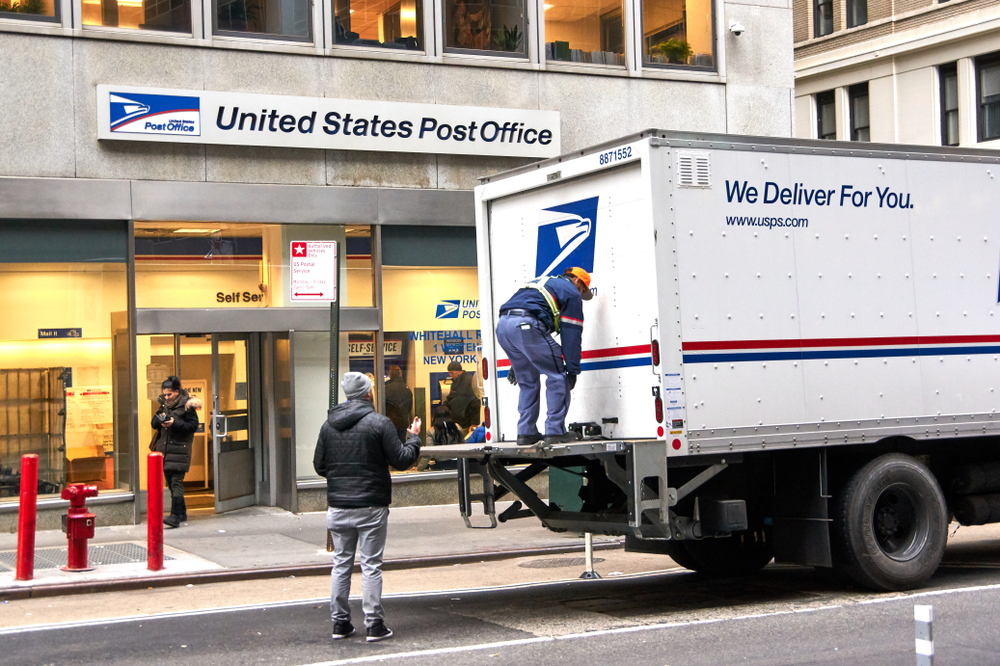The United States Postal Service (USPS) has come under criticism for extending first-class delivery times as part of Postmaster General Louis DeJoy’s 10-year plan to revitalize the agency. According to Tyler Powell and David Wessel at Brookings, “The USPS has operated at a loss since 2007.”
In response to the news of delayed service, Senator Kirsten Gillibrand, D-N.Y., tweeted, “Louis DeJoy is wrong. We don’t need to cut service to save the Postal Service—we need to expand it.” Actually, USPS needs the opposite. It’s too big, not too small.
The U.S. Constitution gives Congress the power to “establish Post Offices and post Roads.” Today, however, what that means is, in exchange for a monopoly on your mailbox and non-urgent mail, the USPS is severely hamstrung by federal regulations and congressional oversight.
As Brookings notes, “The Postal Service … relies on revenues from stamps and other service fees.” Yet Congress has limited USPS rate increases to the cost of inflation, meaning that in real dollars it can’t increase its rates, as it did this year, without special approval of the Postal Regulatory Commission, a separate executive agency.
Like a private business, USPS is dependent upon sales for revenue. But it can’t raise prices to cover its costs. As an executive agency, USPS is subject to federal oversight, yet it doesn’t directly receive taxpayer funding. It’s the worst of both worlds.
Under strict price controls and without taxpayer subsidization, even with this year’s rate increases the price of stamps is likely still below the market price, where supply meets demand. When prices are artificially kept below that point, the result is supply shortages, like we saw with toilet paper last year.
USPS is required to deliver the mail to every American, so supply shortages don’t mean some people won’t get their mail. It means some people won’t get their mail as quickly as they need to, which is exactly what is happening. That, and 14 straight years of losses.
USPS’s year-to-year losses, Brookings highlights, have meant that “USPS has missed $42.6 billion of required payments on its health benefits since 2010 and $5.6 billion in required contributions to its pension plan since 2014.” To get a sense of scale, USPS “employs over 600,000” workers, surpassed only by Amazon and Walmart.
Moreover, it is precisely pensions and health care costs, which USPS is mandated to provide, that account for its financial insolvency. “The fundamental problem,” note Powell and Wessel, “is that … its pension and retiree health care liabilities push its bottom line into the red.”
Unable easily to raise prices, USPS also can’t cut the very costs that jeopardize it. The result? USPS has defaulted on its debt to the Postal Service Retiree Health Benefit Fund at least four times since 2006.
Perhaps the mix of expansion and consolidation in DeJoy’s 10-year plan will be enough, but if not, something needs to give.
The best justification for any government service is that there is a clear public interest that cannot be met adequately through the private sector. For example, multiple private and competing lawmaking, enforcement, and justice systems would likely devolve into violent conflict, as is the case with organized crime. As St. Augustine put it, “For what are robberies themselves, but little kingdoms?” A public monopoly on those things by a just and democratically accountable government best ensures an orderly and peaceful society.
Can the same be said for mail delivery? This seems doubtful. To be fair, the question is not whether allowing FedEx, UPS, and others to deliver non-urgent mail and use your mailbox would result in civil war. The question is whether any public need would remain unmet.
For example, people need to pay their bills, and many still use the mail to do so. Some people live in remote areas. Others might not be able to afford the higher postage rates of private carriers. Where private corporations cannot profit, but there remains a clear public need, state services are justified. Competition is the easiest way to discover what services we actually need USPS to provide.
While many of USPS’s 600,000 workers could easily transfer to private carriers, its pension and retiree health care rolls are vast, raising the question whether USPS, like GM, is “too big to fail.” There is a public need here, too. Unlike GM, USPS is a government agency. It could be funded with tax revenue. In addition to cutting costs by downsizing in response to competition and raising its rates as needed, a modest tax could be imposed on precisely those deliveries coopted by the private sector, making up for lost revenue and better financing its pensions and retiree healthcare obligations.
Then it wouldn’t be too big to fail or, as Gillibrand fears, too small to succeed. It would be just what we need it to be.

